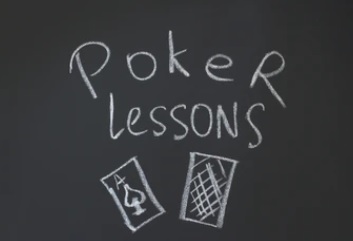Introduction
During December 2014, I ran a series of articles in this column about the study of tactics vs. strategy in poker. While that series got a lot of attention from intermediate players, it left out a lot of people who weren’t really established with a basic level of tactical understanding in poker. For this reason, we’re going to be looking at the essential tactics of no-limit hold’em and the main pitfalls of using them in an effort to get new players up to speed so that they can make full use of the Tactics vs. Strategy series.
Tactic #1: Stealing Blinds
When you’re stealing blinds, you’re essentially open raising with a wider range when it’s folded to you in late position before the flop. The idea behind this tactic is that the remaining people in the hand are going to fold so much that you can make a profit (or come very close to making a profit) just from the percentage of the time that you pick up the blinds. This is one of the most basic ideas that players start with in no-limit hold’em, but it’s often botched after the flop.
The reason players run into issues after the flop is that they forget that they have such a weak range. The point is that you don’t have to go hard after every single flop if you’ve tried to steal the blinds and gotten called. A lot of your profit is made just from taking down the blinds, so if you try to go after a high percentage of flops when you don’t have much of a hand, then you’re going to burn off a lot of that profit by putting yourself in situations where you’re just spewing chips.
Tactic #2: Continuation Betting
If you’re the aggressor before the flop, it checks to you on the flop and you make a bet, then that’s considered a continuation bet. Bluffing as a continuation bet is based on the premise that a lot of people will just check to the aggressor and fold without a hand a higher percentage of the time than they should, and you can take advantage of this by taking down the flop pot more often than you would if they were playing differently.
The main mistake players make with continuation betting is doing it in situations that don’t really make sense in terms of trying to make profitable plays. A good example of this is when you run into multi-way pots and you don’t have much of a hand to go on. Even if you’re three-way, it’s really hard to make a pure bluff profitable just based on the fact that you need two people to fold instead of one. Another good example is continuation betting in situations where it’s hard to get better hands to fold (ie: a bluff) or worse hands to call (ie: a value bet).
As you get a better feel for it, you can also start to look at scenarios where you have a hand that you could probably value bet for one street, but you don’t really want to build a huge pot with multiple streets left to go.
Tactic #3: Pre-Flop 3-Betting
The posting of the big blind is the first bet pre-flop, a raise is considered the second bet, and the re-raise is the third bet. This is where the name “3-betting” comes from. If an opponent raises and you put in the first re-raise against them before the flop, then you’ve made a 3-bet. Tactically speaking, a lot of players will fold entirely too much to a 3-bet which makes 3-bet bluffing a viable tactic if you pick your targets wisely.
As you can probably guess, one trap you can fall into is 3-betting entirely too often against the wrong players. In those situations, you’re really just burning money, and there’s not much left to say about it.
Another problem is choosing the wrong hands to 3-bet with in the first place. You don’t want to be 3-bet bluffing with hands that you can profitably call with. Instead, you want to 3-bet bluff with hands that are just slightly worse than the hands that are profitable to call. For example, if it was profitable to call with JTs and not J8s, then you’d be more likely to want to 3-bet with J8s if you decided you needed to bluff.
It’s worth noting that 3-betting before the flop is an important counter to Tactic #1 stealing blinds.
Tactic #4: The Free Card Play
Note: I discussed the evolution of the free card play in the Tactics vs. Strategy series which a lot of players will find interesting.
There are two basic forms of the free card play, and they both require you to be in position, heads-up on the flop. If your opponent checks to you, then you can bet the flop with a draw. They’ll often call and check to you on the turn. If you miss your draw, then you take advantage of their tendency to check to you by simply checking behind and getting your “free” card on the river. This can be a special casino of Tactic #2 continuation betting.
However, a variation on this which is pretty strong as a counter against Tactic #2 is when you raise a continuation bet in position with a draw. You give your opponent a chance to fold, but if they call, they’ll often check to you on the turn. Then the same thing applies where you just check behind to get your free card.
An Overview
These four tactics are just scratching the surface of what’s possible on the tactical side of poker. If you study these four plays in actual hands, however, you’ll gain a bit of an understanding of poker in general, and this will make it easier for you to transition into studying the game from a strategic point of view as well.
Submit your review | |









